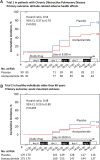Counseling Patients with Chronic Obstructive Pulmonary Disease Traveling to High Altitude
- PMID: 37646641
- PMCID: PMC10516222
- DOI: 10.1089/ham.2023.0053
Counseling Patients with Chronic Obstructive Pulmonary Disease Traveling to High Altitude
Abstract
Bloch, Konrad E., Talant M. Sooronbaev, Silvia Ulrich, Mona Lichtblau, and Michael Furian. Clinician's corner: counseling patients with chronic obstructive pulmonary disease traveling to high altitude. High Alt Med Biol. 24:158-166, 2023.-Mountain travel is increasingly popular also among patients with chronic obstructive pulmonary disease (COPD), a highly prevalent condition often associated with cardiovascular and systemic manifestations. Recent studies have shown that nonhypercapnic and only mildly hypoxemic lowlanders with moderate to severe airflow obstruction owing to COPD experience dyspnea, exercise limitation, and sleep disturbances when traveling up to 3,100 m. Altitude-related adverse health effects (ARAHE) in patients with COPD include severe hypoxemia, which may be asymptomatic but expose patients to the risk of excessive systemic and pulmonary hypertension, cardiac arrhythmia, and even myocardial or cerebral ischemia. In addition, hypobaric hypoxia may impair postural control, psycho-motor, and cognitive performance in patients with COPD during altitude sojourns. Randomized, placebo-controlled trials have shown that preventive treatment with oxygen at night or with acetazolamide reduces the risk of ARAHE in patients with COPD while preventive dexamethasone treatment improves oxygenation and altitude-induced excessive sleep apnea, and lowers systemic and pulmonary artery pressure. This clinical review provides suggestions for pretravel assessment and preparations and measures during travel that may reduce the risk of ARAHE and contribute to pleasant mountain journeys of patients with COPD.
Keywords: altitude illness; altitude travel; altitude-related adverse health effects; chronic obstructive pulmonary disease; prevention, mountain sickness.
Conflict of interest statement
No competing financial interests exist.
Figures

References
MeSH terms
Substances
LinkOut - more resources
Full Text Sources
Medical
